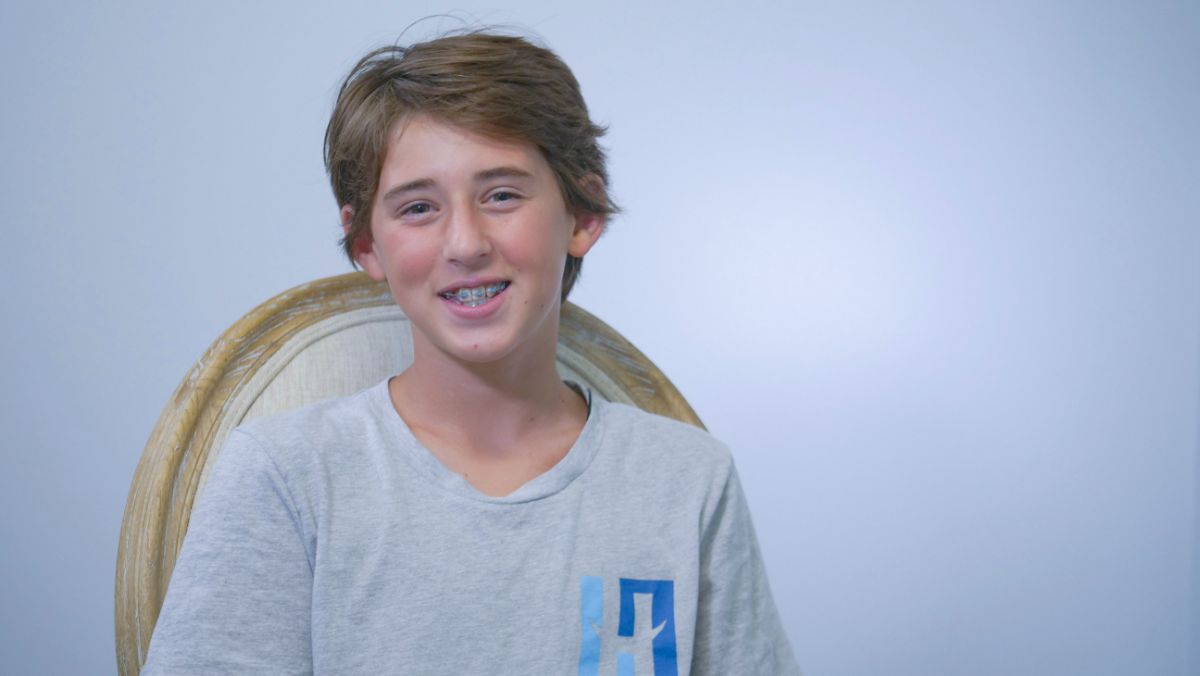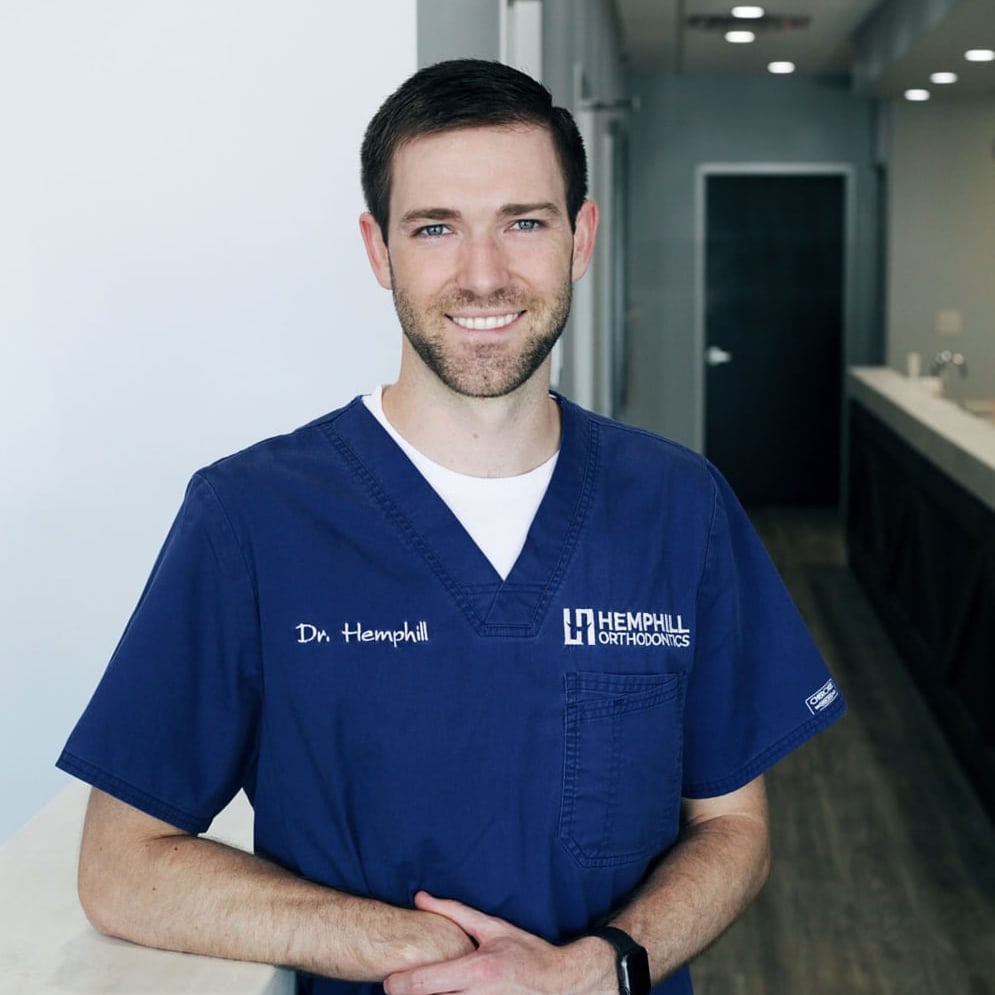Here at Hemphill Orthodontics, we know how much hard work goes into straightening your smile! Now that the active phase of treatment is nearing a close, it’s exciting to imagine a life without braces or clear aligners. There’s still one more phase to go, however—retention. This second step in your treatment will round out the whole process and help you maintain your newly straightened smile. Retainers are an essential part of your orthodontic journey in our Celina office and wearing them as directed by Dr. Hemphill plays a crucial role in keeping your teeth in their new positions. Let’s take a closer look at what you need to know about retainers and why they’re so important!
What is a retainer?
A retainer is an orthodontic appliance that is molded and designed to fit each patient’s mouth. Once your treatment is complete, we take a digital scan of your newly straightened teeth, make 3D-printed models of your teeth, and use them to create retainers that are custom-fit for you. Even though the retainers are designed for your specific smile, it can feel a little weird when you first put them on, but it’s important to wear them even if there’s a bit of initial discomfort.
After active treatment is completed, your teeth will have a tendency to shift back toward their original positions in just a matter of days if there’s nothing to keep them in place. If you don’t wear your retainers as directed by Dr. Hemphill, you could undo all your hard-earned progress and end up right back where you started. Nobody wants that to happen!
The most recent orthodontic wisdom suggests that, for the best results, some type of retainer will need to be worn indefinitely after treatment, at least part-time. This can sound overwhelming at first, but wearing a retainer will quickly become just another part of your nighttime routine.
How do retainers work?
After orthodontic treatment with Hemphill Orthodontics, we need your teeth to stay in their new positions, but the gums and bones will need to align to these positions, too. The soft and hard tissues surrounding the teeth can sometimes take longer to align to a different position. Wearing your retainer as directed by your orthodontist will help the gums and bones to realign and assist in stabilizing your new bite.
Think about it like this—teeth aren’t fixed in the jaw like posts surrounded by concrete. Each tooth is held in a socket by elastic ligaments that attach the roots to the bone. These ligaments are living tissue affected by tooth movements, and their attachment allows for small movements of the teeth during treatment. When pressure from braces or aligners move the teeth, the ligaments and bone have to re-form around the teeth.
This is known as the remodeling phase. Once tooth movement has been completed, the tissues, ligaments, and bone need time to stabilize. Without the retainer to help hold the teeth in their new positions as they stabilize, the teeth start moving back toward their old positions. Over time, these changes become more permanent, but retainers remain an essential tool in keeping everything stable, because the tendency for shifting never goes away completely.
What are the different types of retainers?
There are two types of retainers: fixed and removable. When deciding which type is best for you, Dr. Hemphill will consider your specific needs, your preference, and the level of compliance that’s expected.
Fixed retainers
Fixed retainers are also referred to as bonded retainers. They consist of a thin wire that is bonded behind the bottom front teeth. After successful treatment, a fixed retainer can help ensure that your result lasts long-term!
If you have a fixed retainer, you’ll need to brush and floss carefully to ensure it stays clean. Since the wire stretches across several teeth, you will have to thread floss under it to adequately keep it clean. Even though a removable retainer is still recommended over fixed retainers (see the next section on removable retainers), the bonded wire maintains your arch dimensions, reducing the chance of noticeable shifting of the lower front teeth (the most common teeth to “relapse”). In this way, fixed retainers help provide excellent and lasting outcomes.
Removable retainers
There are a couple of different options available in our Celina office when it comes to removable retainers. The Hawley and Essix models are both custom-designed to fit your mouth for the best results.
Hawley retainers
Hawley retainers are the traditional retainers, probably the ones you’d be most likely to recognize! They’re made of an acrylic arch that rests inside the teeth, with stainless steel wires that wrap around the outside of your teeth. The wire portions of the retainers can be adjusted to continue minor movement of the front teeth if needed. Though we don’t use them as often anymore, they can still be helpful in some situations.
Essix retainers
Essix retainers look very similar to the clear aligners used with the Invisalign system. They’re made entirely of transparent plastic and molded to the unique shape of your mouth. Essix retainers cover the teeth and wrap around all sides, so they do a good job of maintaining alignment and arch shape. This type of retainer is very subtle and should last a long time, provided that you care for it properly.
Cleaning your teeth is more manageable with removable retainers, but you will have to remember to wear them consistently every night. They can be pretty easy to misplace or damage, so you’ll also need to be mindful of where it is at all times and be careful when handling it. Keep this motto in mind: if it’s not in your face, it’s in your case!

Continuing orthodontic care with Hemphill Orthodontics
Whether you’re just now about to re-enter life without braces or just need a refresher on the importance of retainers, our expert team is here to help. We’re committed to meeting your orthodontic needs through every phase of treatment! If you’re looking for more information on the role retainers play after orthodontic treatment, get in touch! We’ll be happy to answer any questions or concerns you may have.
 972-636-4175
Free Consult
972-636-4175
Free Consult

 Dr. Hemphill
Dr. Hemphill